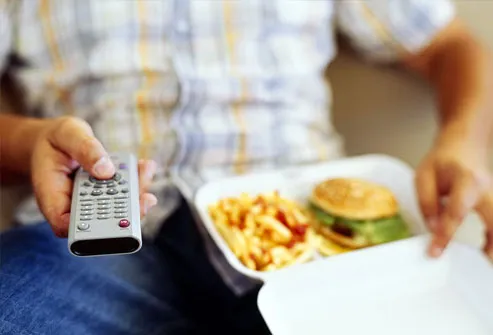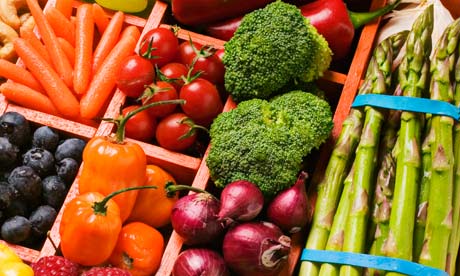Celiac disease, also known as celiac sprue, gluten intolerance or gluten sensitive enteropathy, is a permanent inflammatory intestinal disorder triggered by the ingestion of gluten, a form of protein found in wheat, rye, barley and perhaps oats in genetically predisposed people.
Celiac disease was once thought to be a rare disease; however, it is now recognized as a common chronic disorder that affects as many as 1 % of some Western populations especially Europeans. Recent studies show that celiac disease is a common disease in the world, affecting not only Europeans and people of European ancestry, but also populations of the developing countries such as the Middle East, South Asia, Africa and South America, where its prevalence is similar to that of Western countries.
What happens exactly?
Gluten triggers the small intestine’s inflammatory response! The inflammation leads to the destruction and eventually the loss of the absorptive capacity of the intestines leading to mal-absorption especially fat soluble vitamins (D, E, A and K) and iron, folate, B12, magnesium and calcium!
The challenge with gluten intolerance is that it is often misdiagnosed and that its symptoms imitate other health problems, making it harder to detect it at earlier age. The commons symptoms vary from weakness, appetite loss, weight loss, chronic diarrhea, cramps and bloating. Among 6 studies assessing chronic diarrhea in Middle East and North African countries, celiac disease prevalence was 6.5 % to 21 %! In Iran, Lebanon, Iraq, Saudi Arabia and Kuwait, celiac disease was one of the most common causes of chronic diarrhea! While some may experience painful rash, muscle cramps or joint pain. Therefore early diagnosis is very crucial to avoid malnutrition, stunt growth, short stature and anemia, especially among children! In fact, for children, gluten intolerance is very risky. Unless well managed, it can affect child’s behavior, ability to grow and learn, especially that for appropriate development, high energy and nutrient needs require proper nourishment!
Gluten intolerance can occur at any age. Symptoms can appear as early as infancy, but most cases are diagnosed at adulthood, often 10 years after the first symptoms. Temporary lactose intolerance may accompany gluten intolerance, until the inflammation of the intestines resolve – which might take months or years!
Medical Nutrition Therapy
Primarily, treatment for gluten intolerance is a life-long, strict regimen of a gluten free diet.
When gluten is omitted from the diet:
- The inflammation of the intestine resolve and heal
- Nutrient absorption improves
- Symptoms disappear
Yet this inflammation will recur once gluten is reintroduced in the diet. There are no pharmaceutical cures, so don't be fooled. A 100 % gluten-free diet is a must.
What food should be avoided in a gluten-free diet?
Even trace amounts of gluten in the diet can damage the intestines. Now the grains that should be avoided are wheat (قمح) (or the label can say durum, graham, kamut, spelt, emmer, faro), rye (الجاودار), barley (شعير), malt, malt flavoring and malt vinegar, couscous (كسكس), bulgur (برغل), semolina (سميد), farina (دقيق) and oats (شوفان). Speaking of oats, many confirm that oats per se can be ingested but it is often contaminated by other gluten-containing products. According to the Canadian Celiac Association, some can tolerate oats and it could be safe to consume 50-70 grams (up to 1/2 cup dry oats daily) of uncontaminated oats per day by adults and 20 -25 grams per day by children with celiac disease. However, many can’t tolerate it and with our “unsure” industry in Lebanon, oats may be harvested with the same equipment as wheat and thus many be contaminated. So unless oats are specifically certified as gluten-free oats, avoid them.
Avoiding wheat is probably the most challenging here because it is the main ingredients in many foods! Frequently overlooked foods that may contain gluten and need to be verified from the Celiac Disease Foundation:
- Brown rice syrup
- Breading & coating mixes
- Croutons lurking in salads
- Canned foods such as tuna and meats
- Energy and chocolate Bars
- Flour or cereal products
- Imitation bacon and seafood like surimi crab for example
- Luncheon and processed meats
- Marinades
- Pastas and pizzas
- Processed and luncheon meats
- Sauces, gravies
- Self-basting poultry
- Soy sauce or soy sauce solids
- Soup bases
- Stuffing and dressings
- Sweetened milk with malt
- Thickeners (Roux)
- Herbal supplements
- Drugs & over-the-counter medications
- Nutritional, vitamin and mineral supplements
Distilled alcoholic beverages and vinegars do not contain any harmful gluten peptides. Research indicates that the gluten peptide is too large to carry over in the distillation process. This process leaves the resultant liquid gluten-free. Wines and hard liquor/distilled beverages are gluten-free. However, keep in mind that beers, ales, lagers and malt vinegars that are made from gluten-containing grains are not distilled and therefore, are not gluten-free.
So what can we eat if we’re on a gluten-free diet?

- The good news is that all fresh fruits, vegetables, beef, chicken, fish, lamb, pork and dairy products are naturally gluten-free. Just make sure they are fresh and not contaminated with gluten.
- Gluten free grains that can be consumed when you are cutting your gluten intake are rice and its flour (الأرز), corn (maize) and its flour (ذرة), potatoes (البطاطا), potato starch (نشا البطاطس), uncontaminated (gluten free) oats, soy, beans, millet (دخن), teff, polenta, wild rice(الأرزالبري), quinoa, tapioca (التابيوكا), nut flours and buckwheat (الحنطةالسوداء/روسي قمح). If the label on your food package says amaranth, xantham gum, guar gum or sorghum, you’re free to have these as well.
- Now don't be misled by products that claim to be wheat-free - they may contain barley or rye! It is important to read on your food that that specific food is “gluten free”. Read your food label wisely, sometimes wheat can be disguised as the word semolina or farina, so know your linguistics well. Labels must be read every time foods are purchased because manufacturers can change ingredients at any time.
- And stay up to date with gluten free food products! Ok, so I’ll admit is, the country is not quite well equipped for gluten-free products, but this doesn’t mean that we don’t have any. So I decided to look around and here’s what I found.
Stores, Supermarkets and Bakeries
A New Earth store: organic gluten free products, like several types of pasta (quinoa, buckwheat, brown rice, black rice, and many others...) Breakfast Cereals for adults and kids (around 10 different ones), crackers, Oat cakes, chocolates, Tamari sauce, ketchup, candies, Bars, Flours, Grains, kuzu, fritters, oat pita bread, oat man2ouche.
TSC, Metro, Charcutier Aoun and Spinneys Supermarkets: gluten free pasta, lasagna sheets, bread mix, all purpose flour, bread sticks, rice cakes, couscous, crackers, maize galettes, muesli, toasts, soup mixes, buckwheat pancakes mix, chocolate cake mix, fruit filled biscuits, whole-fruit cookies, rice cakes, muffin mix, breakfast bars, chocolate and rice breakfast cereals
Keyrouz Bakery: They provide corn breads only; however, with a one day notice, they can prepare gluten free breads, dough, pizzas and burger buns
Al Sultan Bakery: Kaak, thyme or cheese man2ouche, pita bread, doughs, buns, burger buns, pizzas, toasts, plain or dates brioche, cheese, chocolate and thyme croissant, pain au lait, pain au chocolat, vanilla or chocolate cakes, sable vanilla or chocolate and swiss rolls.
** This list is not for advertising purposes whatsoever! It is only to help anyone find gluten-free products in Lebanon. So if you know more places where we can find certified gluten free foods, feel free to add your store!
As for restaurants in Lebanon, most do not guarantee a meal that is 100% gluten free. The risk of cross contamination in the industry, storage, preparation method and when serving is high because kitchens handle wheat as well as gluten-free grains and products in the same kitchen! So when eating away from home, pack your gluten free food with you, read menus carefully and ask all the questions needed and inform the restaurant of your intolerance!
* If you are looking for more about gluten-free foods and celiac disease in Lebanon, you will find joy in reading Sans gluten a Beyrouth blog!
Photos
 Don't neglect your fruits and veggies - The most common cause of constipation is a diet low in fibers! Fiber is necessary to help move food around your digestive tract and thus alleviates constipation. Therefore, whether you are preparing Christmas dinner this year or you are helping in devouring it, make sure to include vegetables in your main meal as well as fruits as dessert. And make sure to eat them as well.
Don't neglect your fruits and veggies - The most common cause of constipation is a diet low in fibers! Fiber is necessary to help move food around your digestive tract and thus alleviates constipation. Therefore, whether you are preparing Christmas dinner this year or you are helping in devouring it, make sure to include vegetables in your main meal as well as fruits as dessert. And make sure to eat them as well.















